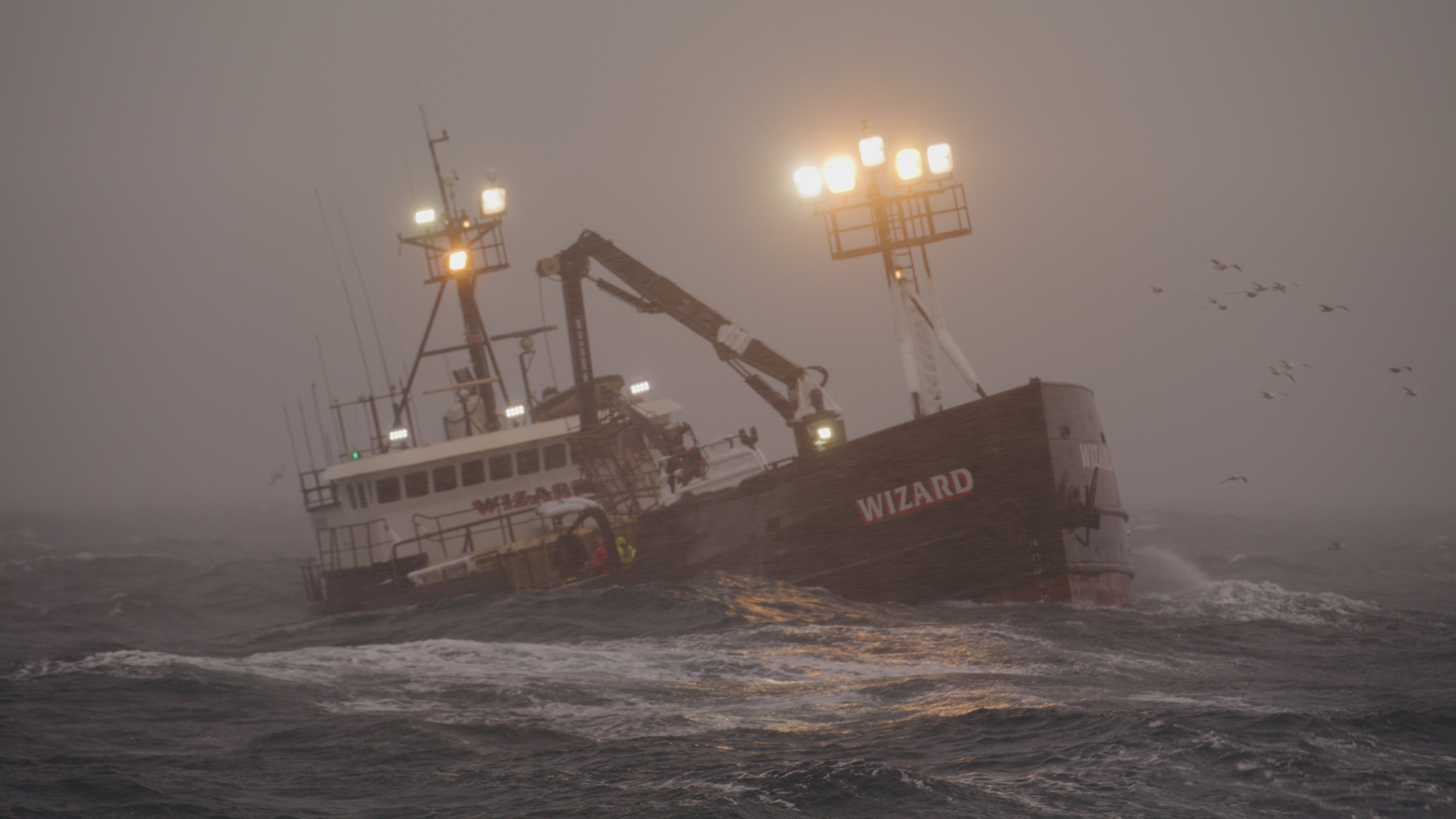
Rough Seas: Deadliest Catch
Cinematographer David Reichert and executive producer Brian Lovett on the perils and cinematic evolution of the long-running series.
All photos courtesy of Discovery
The basic premise of Deadliest Catch is starkly dramatic. There’s a storm coming. It is winter in the Bering Sea off the Alaskan coast. Fishing boats pitch in huge seas as deckhands try to manhandle 800-pound steel cages full of crab onboard. Their captains peer anxiously through freezing spray to make out the next monster wave coming at them. Splash, crash and repeat.
This would clearly make for a successful 90-minute documentary — yet the brilliance of the Discovery Channel series has been its ability to keep the audience coming back for 16 seasons and more than 260 episodes, with Season 17 currently in production and anxiously awaited by its fan base. The show has done this by keeping its viewers invested in the people on the fishing crew as they confront the power of the ocean and their own inner demons, often simultaneously — and turning some of the boats’ captains into minor celebrities on the side.
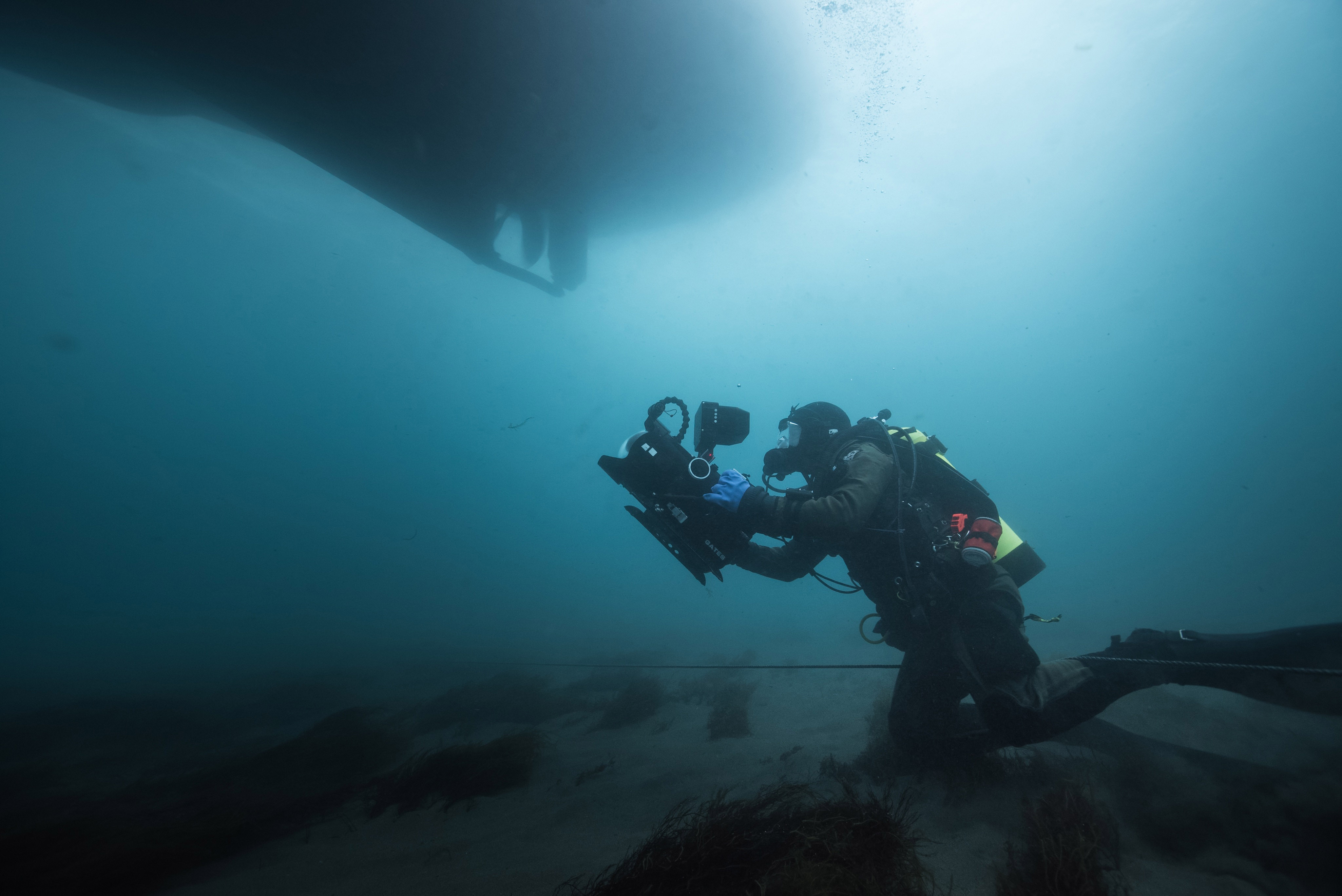
“After 15 years, the audience has seen a lot of the scope [of the fishing] and it could become repetitive — so we had to find a way to make it more cinematic and get people more involved,” says Brian Lovett, who was part of the original team that created Deadliest Catch in 2003, and is now an executive producer of the series. “In the early 2000s, at the beginning of reality TV, it was all about danger, drama and death. Now it has evolved into danger, drama and characters.”
Central to this evolving storytelling style is the enhancement of the show’s cinematography. The series has both adopted new technology for filming in such unforgiving environments, and encouraged the camera operators on each of the six (or sometimes seven) boats they are documenting to be more creative — and intimate — in their shooting.
“The technology has changed, but what hasn’t is the environment — the intense and deep cold, the saltwater, the heavy equipment on deck.”
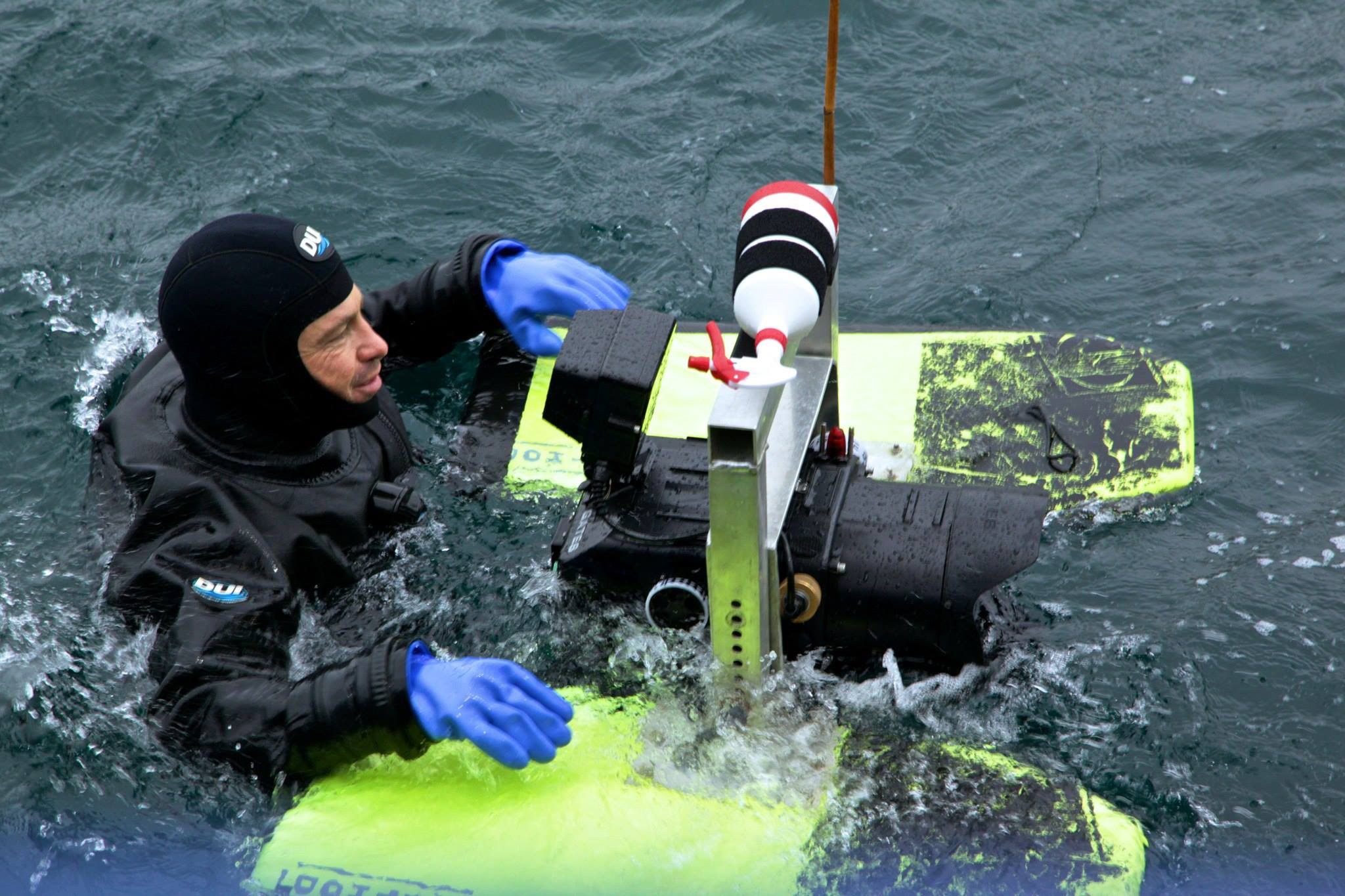
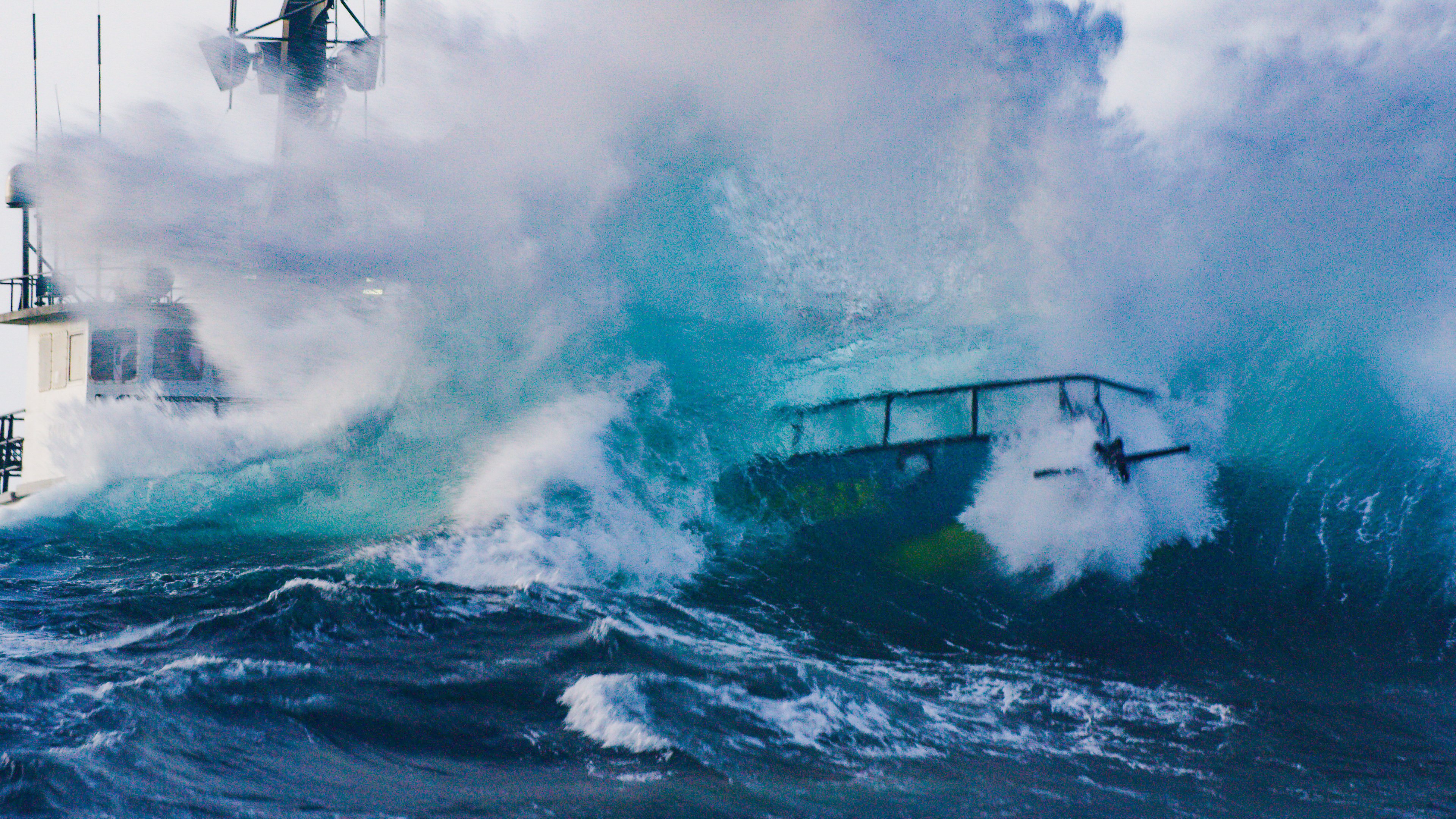
“In the first season, they went out there and pretty much sprayed and prayed,” says David Reichert, who has been director of photography on the series since 2013. “A big difference in the show now is that we are shooting more cinematic material, with different frame rates, different depths of field — and the editors and producers have figured out how to use it.”
When Reichert and Lovett spoke with AC, in separate conversations, they each made it a point to illustrate this evolution by comparing how recent episodes have dealt with situations like an approaching storm, as compared to episodes from the early seasons. In 2005, the first season’s fifth episode (“Dead of Winter”) opened breathlessly with rapidly paced shots of waves crashing over decks, crab pots swinging dangerously, and men getting injured, as the radio warns of a growing storm and announces that five men are still missing from a capsized boat. By contrast, in 2019, the 15th season’s fifth episode (“Shifting Stack”) — in which the fleet is also facing an approaching storm — opens with the camera holding on waves in slow motion, and then we see a captain in his darkened wheelhouse framed with plenty of negative space, and a lingering shot of a deckhand looking wistfully out to sea, with a soundtrack of a plaintive ballad in the background. As 30' waves the height of the wheelhouse crash by, one captain says, apparently to himself, “I am, like, seriously scared.” And you believe him.

“Everyone is on their own, and it is incredibly moody,” says Lovett. “Before, we would have gone with more action, but this was a very strong opening, stressing how the crewmembers are thinking as the storm comes.” Reichert adds that simply holding shots for more than a few seconds is something that they used to not do. “What helps is the frame rate — we have the ability to shoot up to 120 frames per second. Add slow motion to water and the ocean becomes very ominous … Use it for a crabber’s facial expression and you really see what their mood is.”
Many of the show’s current camera operators are veterans of the series, and have learned how to deal with the extremely hazardous conditions. “Now we have over 100 years of ‘deadly catch’ experience on the boats as we speak,” Lovett says. But there are also new crewmembers — greenhorns — who always start out on the deck, and who have to know where to stand and what to look out for. “They need to ingratiate themselves with the fishermen, who will keep them safe,” says Reichert. “It’s harder for the cameraman to be aware of his surroundings as he frames a shot — the fishermen are watching the hooks and cranes.”
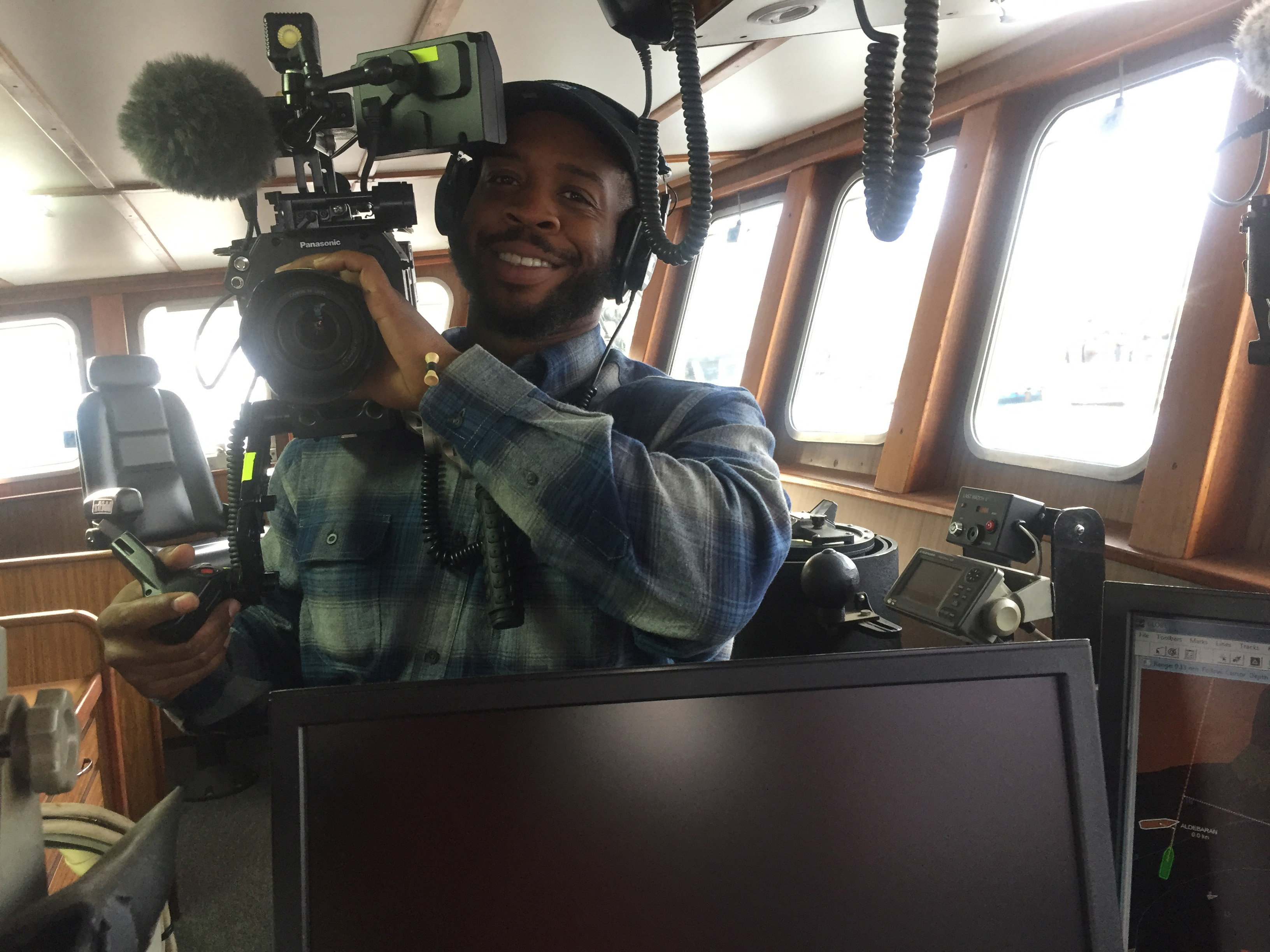
On each boat there is a second operator who doubles as the producer, and this crewmember’s job is to stay in the wheelhouse, film the captain, and maintain an overview of developing stories. Often the captains are stories in themselves. “There is something about the crab boat captains,” says Reichert. “The conditions in the Bering Sea are life-and-death, and their personalities are unbelievable — it does take a certain type of person to do that.”
At the beginning of every season, the entire Deadliest Catch camera crew gathers in Dutch Harbor, homeport of the fleet, and they go through a concentrated film school before they get on their assigned boats. They look at clips from the previous season, review what went well and what didn’t, and talk about what is coming up. “It’s critical to give the operators a very detailed clinic, and get everyone in the room back on the same page,” Reichert says. “We want a consistent look across the series, and that is hard with six different crews.” Particularly because once they have gotten on the boats, Reichert cannot see any of the footage they have shot until the boats return to the harbor after the fishing is over. “I have no choice but to have faith — the earliest I get to see it is too late. There have been some sad moments when things came in bad, but less and less often.”
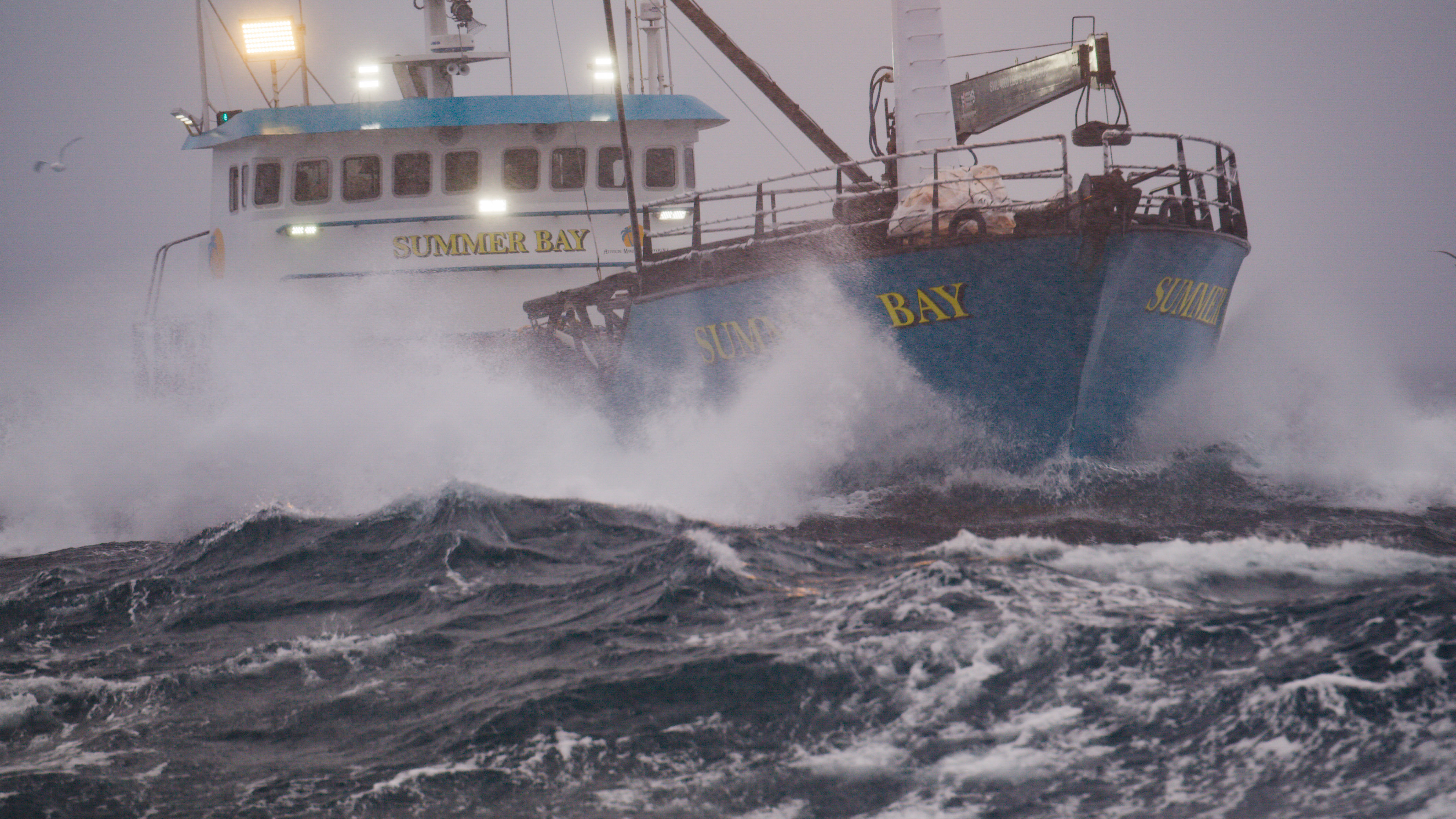
During this preparatory week, the team also reviews new equipment they will use. The show started out using Sony DSR-PD150 camcorders, and then came Sony HVR-Z5s and Z7s. When Reichert took over as series director of photography in 2013, they switched to a Canon C300 Mark I in the wheelhouse and the C100 Mark II on the deck. “It was a huge move away from a 1/3-inch sensor to the shallow depth of field of the C300’s Super 35 sensor. I see this as a major turning point in the look of the show,” Reichert says. “We pushed the cameras to [larger] sensors to give us that cinematic look.” More recently, in 2019, they moved to Panasonic cameras — a VariCam LT in the wheelhouse and the lighter AU-EVA1 for the deck camera, both of which have dual native ISO that allows for better sensitivity in low light.
Reichert notes that the low-light capability is a boon to shooting in the wheelhouse, where light needs to be at a minimum, as “the captain needs to see what is happening in the dark.” And beyond that, 60 percent of the show is shot in the dark, largely because in northern-latitude winters, the sun rises late and sets early. “We use Rosco light panels to augment the instrument lighting — it is a dark look and that’s what we want. As for the EVA1 on deck, despite multiple experiments with carbon-fiber housings and special coatings for the camera, the show continually returns to one of its most useful accessories for keeping the camera dry: a $2 extra-large Ziploc bag.
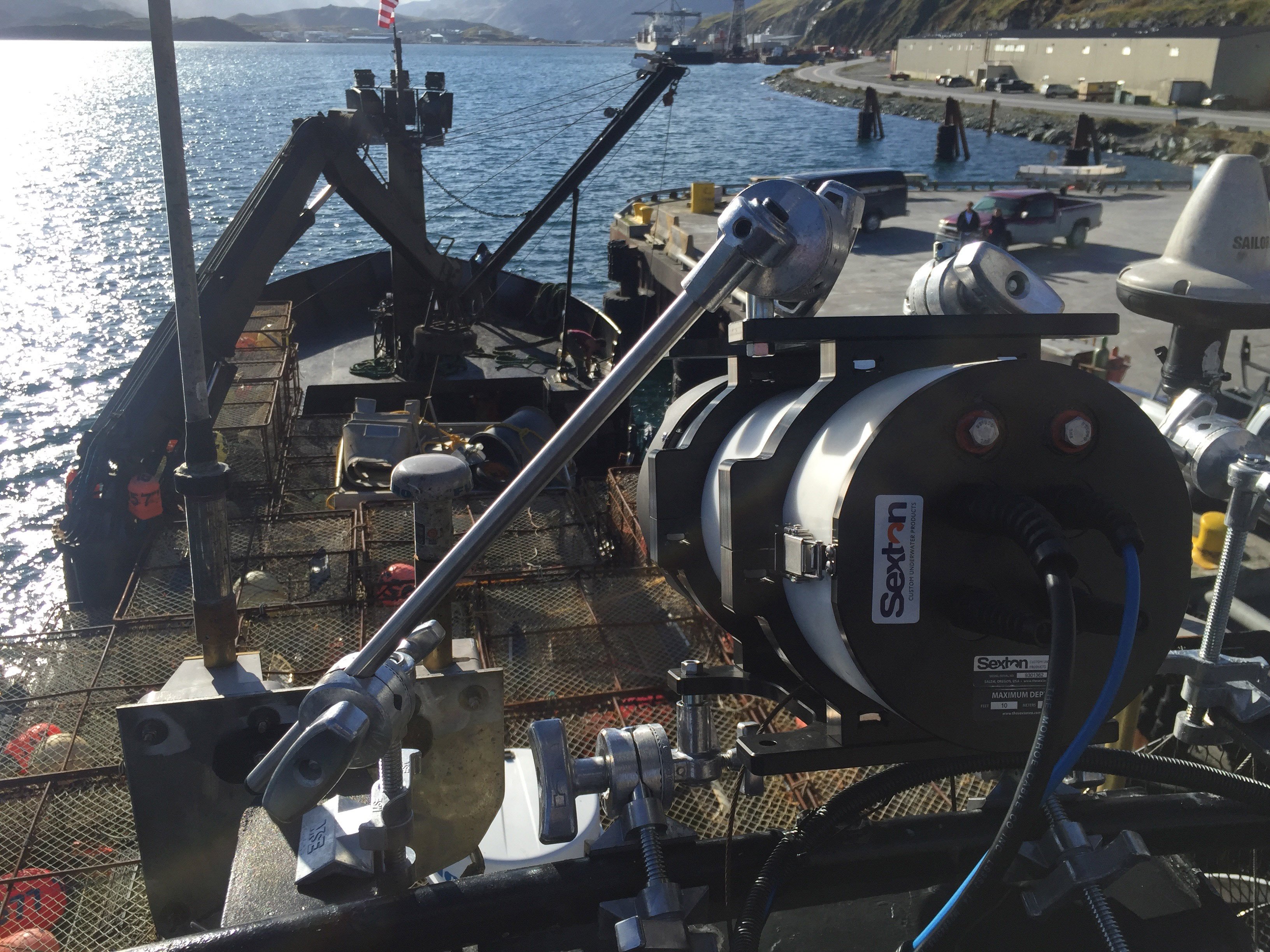
In addition to those two handheld cameras, each boat has four to five fixed cameras running 24-7. There is one Canon ME200S block camera on top of the mast — about 70 feet above the water — that covers 80 percent of the boat and also sees the horizon and the incoming building-sized waves. A second ME200S has its wide-angle Tokina lens focused on the area of the deck where the crab cages come in and are emptied onto the sorting table. “That’s where 80 percent of the action is and where 80 percent of the trouble happens,” says Reichert. In addition, there are one or two fixed Sony a7S cameras in the wheelhouse that the producer can direct wherever the story requires. “We’re rolling these cameras 24-7 on all six or seven boats — we’re generating so many terabytes!” The data is stored on 48TB drives. Over the last two years, production has been averaging 1,500TB of material per season.
Some of the most impressive shots of the crab boats are taken from a chase boat, which has a Red Gemini in a carbon-fiber housing mounted on an extendable 4' arm that can swing out over the side of the boat. The camera is mounted on a Cinema Pro six-axis gimbal from Gyro-Stabilized Systems (GSS), which “enables us to maintain a perfectly stable shot with anything up to a 1,000mm lens,” Reichert says.
“In the early years, we used to lose 65 percent of the cameras! These are the worst shooting conditions imaginable!”
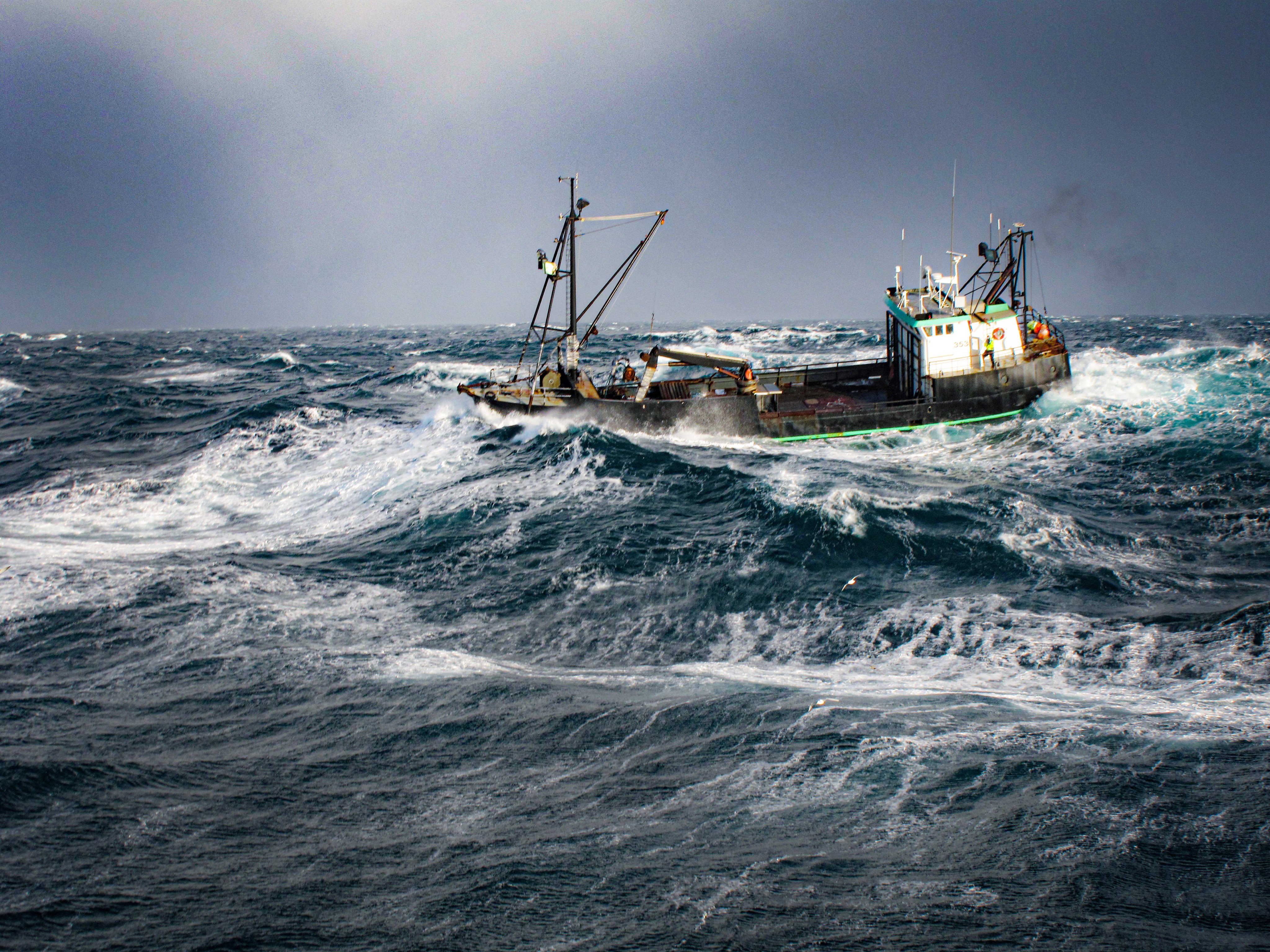
The camera arm is operated manually, and can be swung back in over the rail in bad weather, so the camera is not stripped off by a wave — which would lead to $500,000 of equipment sinking into the Bering Sea. “We really see the movement of the crab boat with the gimbal [holding the camera steady] on the chase boat, because it shows the angle of the horizon.” The chase boat also makes clear how big the waves are — often the crab boat appears almost completely buried in the trough of a wave.
To get another perspective of the boats, the show has used helicopters to shoot them as they leave Dutch Harbor — but there is only so far the aircraft can go from shore before they have to turn back. Then there are drones. “We only really started using drones four years ago when the DJI Inspire came out, with Red Helium cameras mounted on them.” The Catch crew flies drones off their chase boat, but the lightweight quadcopters can only withstand winds up to a maximum of 35 mph. They position the chase boats downwind of the crab boats to make it easier to retrieve the drones, but even still, “we have lost plenty of drones — I have lost two, personally,” Reichert says. “In the early days, they didn’t have anti-collision mechanisms,” which yielded inevitable results when shooting amid 800-pound crab cages swinging through the air.
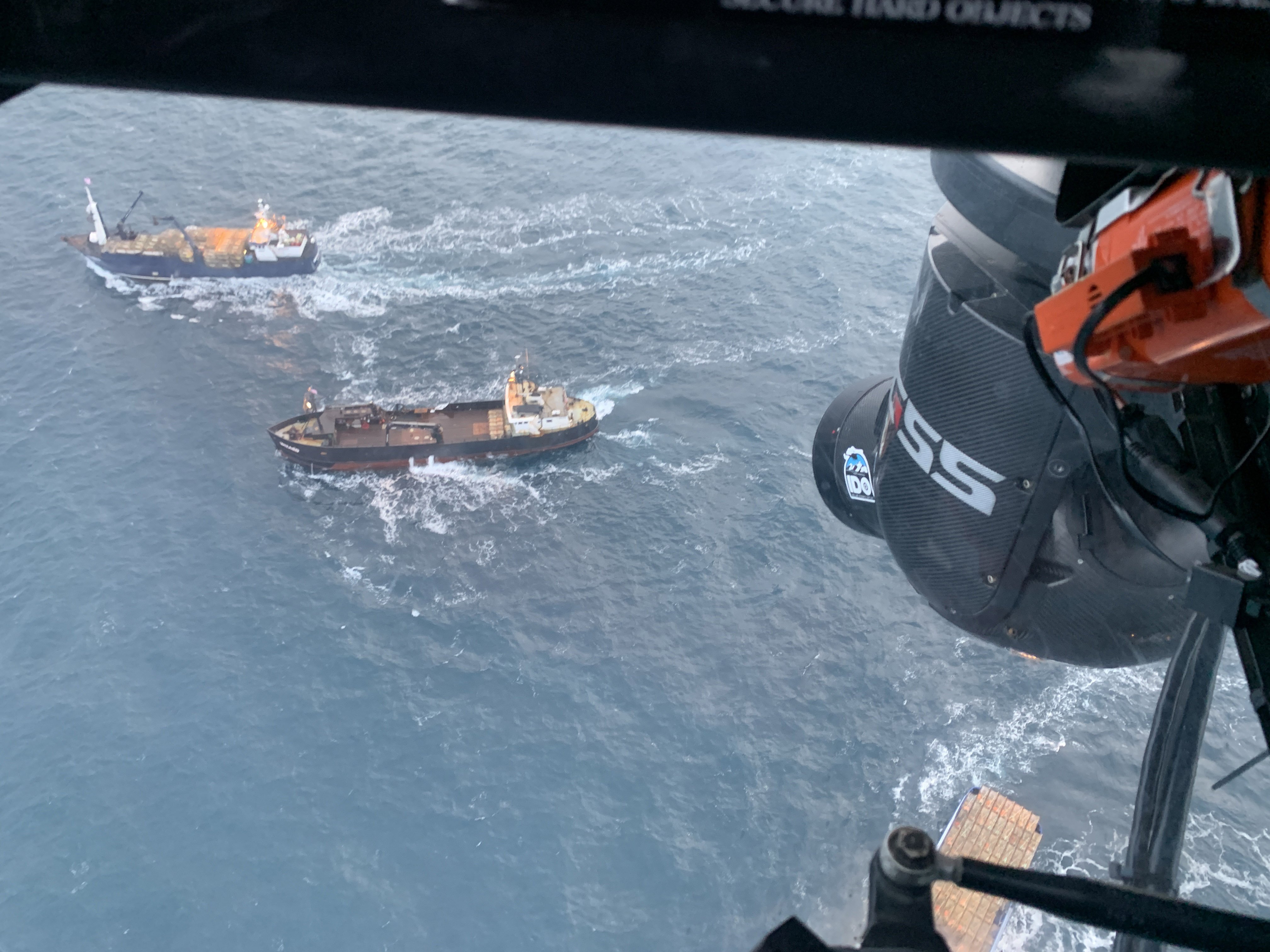
In one notoriously extreme effort to get a unique shot of a crab boat, chase boat cinematographer Shane Moore donned a wetsuit and jumped off the craft into the frigid water, hoisting himself onto an ice floe to shoot a crab boat in the distance from across the ice. Even the veteran fishermen were speechless. “We felt we weren’t getting off the boat enough,” Reichert says. “We wanted to see it from underwater, from ice floes, from the sky, from further away … the boats can get a bit claustrophobic.”
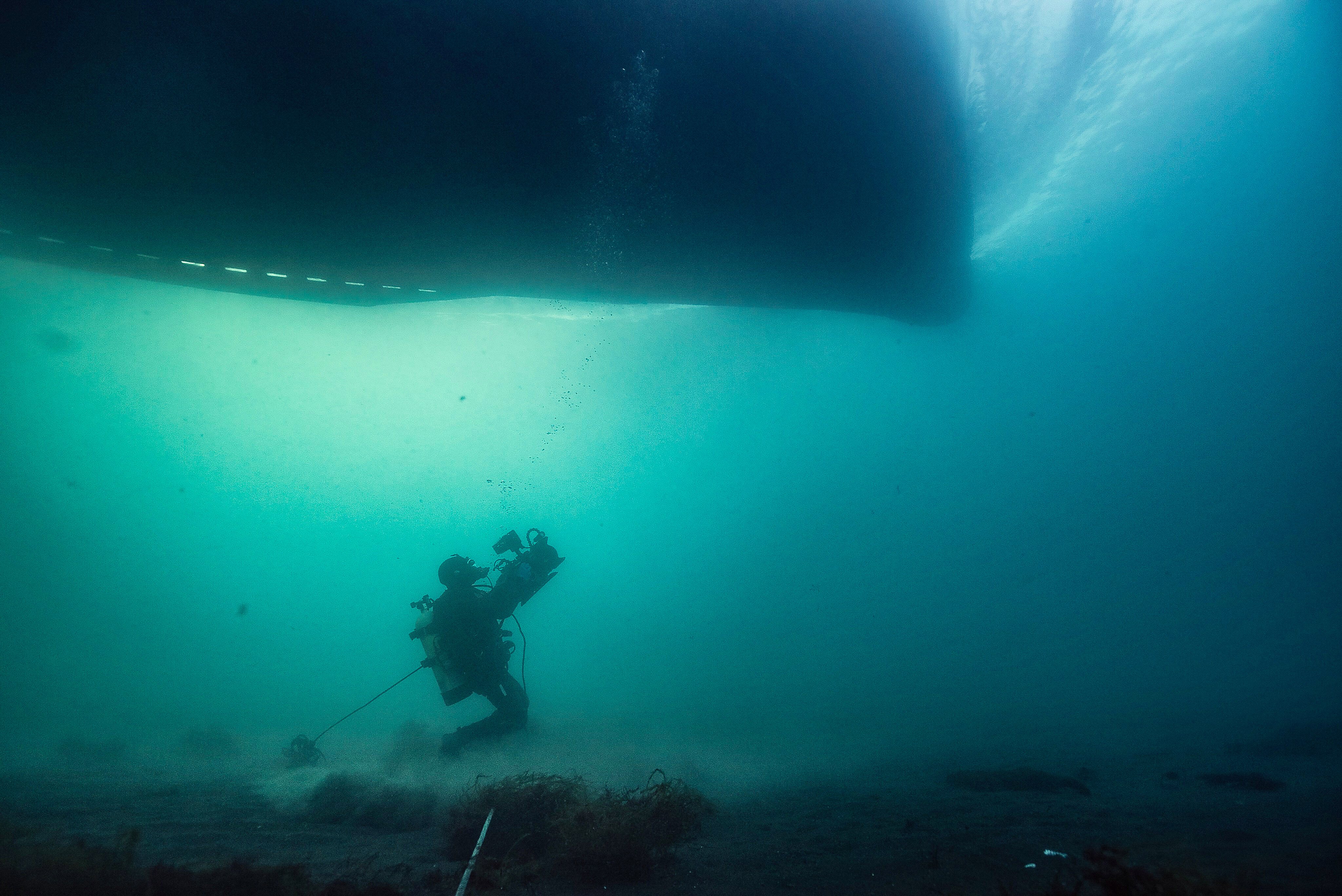

Reichert himself has ventured underwater to shoot crab boats from underneath their hulls. He is also currently testing a remote-control floating camera. “It will be difficult to deploy and recover,” he says, “because it’s big, with a Red Komodo inside the housing. Every year we evaluate our total camera package, and every year there is equipment that we can upgrade.”
“The technology has changed,” says Lovett, “but what hasn’t is the environment — the intense and deep cold, the saltwater, the heavy equipment on deck.” It all takes a toll on their gear. Reichert says that each season they lose about 35 percent of the cameras they use on deck. “These are EVA1s, which are $7,000 each with $1,000 lenses.” He adds with a laugh, “But that’s nothing — in the early years, we used to lose 65 percent of the cameras! These are the worst shooting conditions imaginable!”
Splash, crash and repeat.






